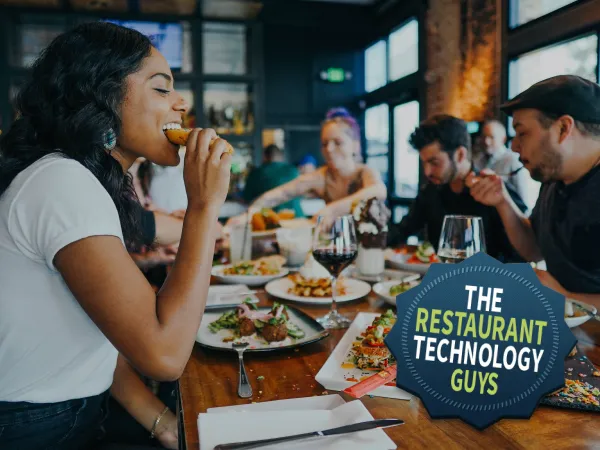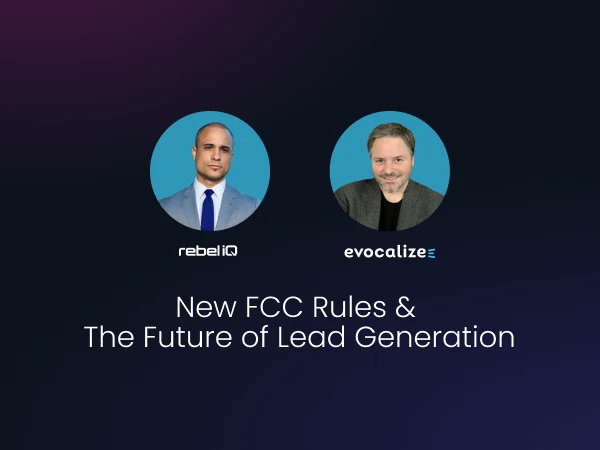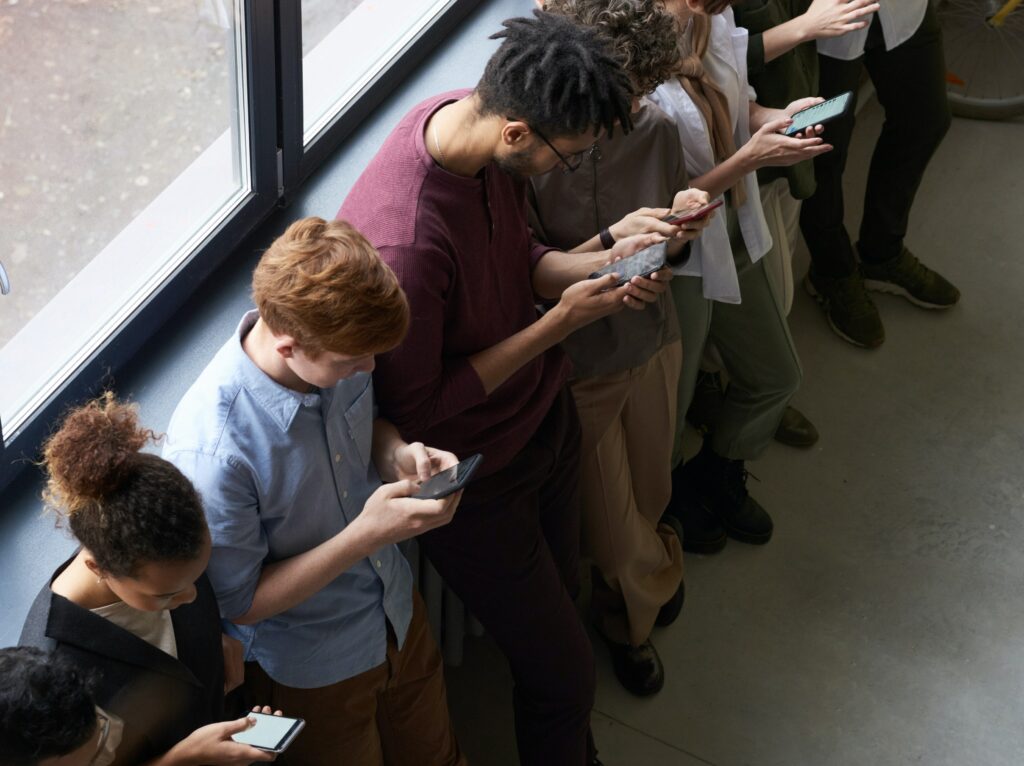Leveraging the power of a local growth flywheel
Hear from Zach Oates, the founder and CEO of Ovation, Shannon Gewinner, the VP of Brand Marketing for Smoothie King, and Matthew Marx, founder and CEO of Evocalize. The three discuss several ways multi-location businesses can drive growth like a flywheel.
Building a local growth flywheel starts with engaging customers at the local level and providing exceptional customer experiences. By measuring customer feedback, using actionable data, and implementing service recovery strategies, businesses can not only improve operations but also harness the power of word-of-mouth marketing and online reviews to drive new customer acquisition.
Discover the importance of personalization and the use of technology, such as Evocalize’s platform, to efficiently reach and engage both known and unknown customers across various digital channels. By creating a seamless and personalized customer journey, businesses can build loyalty, boost online visibility, and accelerate their growth in today’s competitive market.
Below is a transcript of the conversation:
Transcript
Justin Ulrich: All right, well, welcome everybody, and thank you for joining us today. Today’s a really exciting topic for, for us, it’s one that really applies to any multi-location business. When it comes to growth. You know we all know that it starts at a local level, so one of the many challenges that we, we hear time and again, is that it’s really tough for local operators to nail down local customer activation and to drive people around their business to them.
But if you’re able to nail it down and focus on driving that new guest traffic, Then you focus on providing them with a, a really good customer experience that’s exceptional and, and you know, increasing loyalty afterwards, then you can leverage technology and find more customers like those and create this really powerful cycle that’ll just continue to build over time. So today we’ve got some really solid guests with us that are gonna share some insights and, and help us kind of crack the code in this concept of a growth flywheel. I’ll just do a quick around the horn real fast. We’ll start things off with you, Zach.
Why don’t you go ahead and tell us a little bit about yourself and what you do?
Zack Oates: Yeah, my name is Zach Oates, founder and CEO of Ovation, which is an actionable guest feedback platform. And I grew up in the restaurant industry, and one thing I realized is that everything we do is to create a great guest experience, but the ways to measure that experience where we’re really lacking, I mean, very few people want to take a long survey.
Very few people are gonna go and leave an online review, and when they do, they’re three times more likely to leave a negative review than a positive one. And so we wanted to put the conversation back into the into the seat of the customer. And so we have a two-question survey. If they love it, we have them drive revenue.
If they don’t, we ask ’em why, and then we aggregate all that data to show you exactly what you need to fix, where across all of your locations in real time. So that’s, that’s what motivation does. As we were talking about right before we went live, father of now four kids and, and loving that sleep life, I did put on a little bit of mail cup this morning to cover the bags.
Justin Ulrich: Well, that’s great. Shannon, how about you? Let’s go to you next.
Shannon Gewinner: Yeah, so Shannon Gewinner Vice President of Brand Marketing for Smoothie King, and I’ve been in the restaurant space for about 15 or so years prior to that, retail. So the, you know, customer at the center of everything that we do and, you know, building the brand so that ultimately we have long-term loyalty. So excited to be here, you know, worked with you guys at Evocalize now for a while. And you know, happy with everything that’s turning out. So personally, married, two children, one headed to college, one as a senior, so different phase than four children and potentially under five or under four or whatever, whatever it is. But excited. I, I, I love the stage of my life. I am getting sleep, so you know, happy to be here, talk with you guys.
Justin Ulrich: Perfect. Thank you, Shannon. I guess Matt, you know, I know you best. But why don’t you go ahead and tell us a little bit about yourself and who your favorite marketing leader from Evocalize is.
Matthew Marx: Favorite marketing leader. I don’t know. You know maybe Tyson Mickelsen. Shout out baby. Sorry, Justin. Good to be on with, with y’all. I’m Matthew Marks founder and CEO, Evocalize. We’re about 10 years old and our focus is all on empowering franchises to work together with their franchisees, franchise locations with transparency, the power, data-driven, high performing, highly sophisticated marketing programs in Google and, and, and Meta and, and TikTok and other channels where folks are.
And you know, we’re, we’re really passionate about the local marketer. And we know and believe and have a lot of data around local marketing, and it’s the difference that it, it can make. And so really excited to be on with, with Shannon, who’s a longtime friend and, and and, and great partner and just fantastic marketer.
So hope you y’all stick and, and learn from Shannon and then, and then Zach. I was on Zach’s. Podcast I don’t know, a couple months ago. Great podcast. Check it out if you haven’t seen it. And a fantastic word of mouth. I come from a little bit of the word of mouth marketing background and feedback and, and Ovation’s doing some pretty awesome things.
So really excited to be on, on with, with both y’all today.
Zack Oates: Well, thank you. It’s perfect. And yeah, again, thanks for having, thanks for coming on the podcast. Had a lot of fun.
Matthew Marx: Yeah, it was a, it was a blast. A lot of energy.
Justin Ulrich: Awesome. So I thought it would be good as, as we kind of kick things off with today’s call, to talk through a typical like day-to-day experience that a guest might have. You know, if I’m a guest I’m hungry, I’m trying to figure out what I want to eat, there’s lots of options around me. You know, typically, like any, any one of us would do, you’re gonna, you’re gonna pick up your phone, maybe check out an app, or maybe look at Google.
Start Googling “Best Burger near me”, or “best barbecue near me”, whatever it might be. And then, you know, you really at that point, you’re what we would consider like a high intent buyer. Like, you are hungry now, you’re gonna make a, a choice in pretty short order. And really, at the end of the day you know, ’cause marketing teams, they’re gonna be doing their marketing and, and they’re gonna be trying to generate awareness around their brand.
But at the end of the day, it’s the, it’s the company who’s able to engage with me as a, as a guest. Right now, in the moment while I’m looking that’s gonna have the best chance of, of, of winning my business. So that could be anywhere from, you know, them having good reviews or showing up in the three pack on Google, or, you know, I’m seeing an ad in one of the, in one of the apps I’m in.
So that’s really like, you know, kind of the kickoff for today is to talk about, well, how is it that we can engage customers at the right time in the right channels in which they’re, they currently are. I thought Matt would be good to start with. You. You, you actually had a, you were on Jeremy Julian’s podcast, the restaurant guys a week or two ago, and you had some really good points that, that you had shared. And kinda talking a little bit about, you know, with your marketing background and the tech space and some marketing, digital marketing tech and stuff, two different buckets of customers that, that you would go after being knowns and unknowns.
And I thought that’d be a good place for you to start kind of talking us through that.
Matthew Marx: Yeah, totally. So I think it’s this, this is a great kind of group of people to talk through this, right? But if we think about, we think about you know, most marketers think in terms of funnels, right? And so there’s a kind of a linear path down a funnel.
But McKinsey and Company, probably 15 years ago now, coined the, the concept for one of the folks who coined the concept of the loyalty loop, right? And so I think that’s particularly kind of important to. And in this case, we’re not just talking about brand loyalty and Shannon that’s passionate about that at a corporate level, but also local loyalty.
So how are we, are we loyal to the local, you know, the location around you and how do we use that as as, as franchisees, you know, and as franchise owners at the, at the corporate level, how do we use that, that credibility and really tap into loop? And so when we think about it, we’re all about how do we go find people and bring them into the location when they’re needed, right?
And so you know, that that’s based on some background, just patterns of how people interact. People are spending their time on Instagram and TikTok and Facebook, and Google, Google Maps. And to your point, Justin, when they’re hungry, they’re going in doing searches if they aren’t already kind of tapped into where they want to go.
And we know, we know local searches just from the data in Google. Searches that include location, neighborhood names “near me” terminology have increased 5X over the past 10 years. So this, this, like local movement is, is taking off, continues that we keep thinking, okay, it’s gonna start to e and it’s not, it keeps going, right?
And so people wanna be, it’s, we’re still a neighborhood-based culture and people wanna be based in their area. So and, and we also know that 46% of searches on Google have a local intent to them. So how do we use all this data, right? So you talked about known customers and unknown customers. That’s how we break down the world a little bit, you know, at Evocalize and how we think, right?
So what do we mean when we talk about known and unknown? Known that those are folks that you have expressed their, their presence to you, right? So they, they’ve either given you their contact information, signed up for a loyalty program, left some feedback, right? And so you start to know who they are, not only in person, but digitally, right?
So digitally you have their name, their contact information. There’s also a set of known customer that we think about, which is. They’re known, you don’t know their name, but you know that they’ve been to your website or that you’ve been to their app, or they’ve been floating around. And those folks you have a, a pixel on, right?
So the website or the web ecosystem knows who they’re right. So that’s your known customer set. Folks who either know their name, their email address, another phone number, Or you have some kind of web identity on them that you can use. The other side are folks who we have no idea who they are, right?
And they’re maybe in the neighborhood down the street, maybe they go to the local school or their parents of the local school children. And we as the local, you know, restaurant or, or fitness center, we, we we don’t have any idea who they are, but we want them to know us, right? And so those are two groups of customers and really you can digitally and should digitally market to both of them all the time, but you should market to them differently.
And the goal over time is to get to know more and more customers. So move them, you know, from, from the unknown to the known. Get them in the pool so that you can more personally market to them. Like, you know, they’re, they’re your regular, you know, norm that comes into cheers, you know, and, and walks in the front door.
So that’s really what we mean by known and unknown customers. And we think about fishing in the pool of unknowns to bring folks down and start to work them around this loop, the loyalty loop I mentioned to, to get to know them better every time. It’s a lot of where Zach, Zach comes in and, and you know, Ovation comes in in terms of getting to know them, you know, when they’re, when they’re coming in the door.
Justin Ulrich: No, that’s actually a, a really good really good point. I think, you know, Zach, I was gonna, I was gonna ask you, you know, I, I know that your title is CEO, but anyone who knows you, knows that you’re a marketer at heart. Hands down, you know, and the old approach to marketing has always been like, You know, just do whatever you can kind of throw things at a, at the wall, see what sticks. You’re just spending money just to spend and generate tons of awareness. But what is your take on how things currently are with what Matt’s saying? Leaning towards personalization?
Zack Oates: And I think that personalization, it starts with the people that are coming in your door.
Every restaurant, the benefit is that there’s, there’s a door, there’s an online presence, there’s an opportunity to take an order. And in, in this day and age, it is hand-to-hand combat folks. This is one-to-one. You have to care enough about your guests to connect with them. And when I look at what has driven a lot of revenue, we just did a case study with a, with a really large pizza joint.
And one of the things we found is after four months, they put us in some locations. Didn’t put us in others. Same city, same marketing budget, same everything. The big difference was, again, some will use innovation, some weren’t. And after four months, the group used Ovation three times more five star reviews, had 1.1 stars higher on Google, and as a result they were getting 9% more revenue.
Think about that. At the end of the day, if you can get your happy guests to share their experience online, what does that do? Well, that gets you up in the three-pack. That’s gonna be the number one thing that’s going to, that’s gonna boost you up in search engines. And with this high-intent audience, you need to be there. And if, if you’re not getting a, a much higher number of five-star reviews than the person next to you, they’re gonna show up above you. The one thing that’s really key to remember is four stars. Do you know if I go and you type, you started off by asking like, Hey, I’m hungry, and I type in, you know, best burger near me, or whatever.
How many times have you gotten on Google and typed in “Okayest burger near me”? Most average smoothie around, no, you’re gonna type in best. And what does Google do? You could try it on your phone right now. You type in best, best lunch near me. Google will automatically filter out anyone below four stars.
So the floor is four stars. You don’t exist until you get to four stars. Now if you have like crazy high brand recognition and you’re lucky to be part of that group, then that’s one thing, but, typically what’s gonna happen is you, you don’t exist. So ideally you wanna be at the 4.6, 4.7 with 4.8, even with a few hundred reviews and keeping that velocity up because that’s what’s gonna get people in the door.
But to get people in the door to, to get those reviews, you gotta make sure that your happy customers are given the opportunity, the frictionless way to leave you those reviews. ‘Cause if you’re just relying on the kindness of their heart, like I said, they’re three times more likely to leave a negative review than a positive one.
Justin Ulrich: Yeah. And it’s like, you just gotta ask, you know, in many instances they’re willing to do it and, and folks typically don’t unless they’ve had a negative. We hear a lot, a lot of that, where people are more likely to leave a negative review if they’ve had an experience that’s, that wasn’t the greatest.
Justin Ulrich: But if you just ask, especially if they’re loyal customers, they’ll be more than willing to to give it to you.
Zack Oates: Absolutely.
Justin Ulrich: I guess Shannon, for you, what are some, some kind of engaging or, or interesting ways that, that you guys are doing at Smoothie King to, to drive location-based traffic?
Shannon Gewinner: Yeah. You know, before I answer that, it was interesting that Zach, you say about the four stars we’ve In the past, we can almost equate one star to like a 1 to 2% comp.
And it, that was in my past when I was doing casual dining. But the, the, it’s, you know, bad reviews are kind of a double-edged sword. We like some of the bad reviews because we can understand and dig into some operational opportunities. Otherwise we, we may not know, you know, what, if there’s, you know, a management issue or you know, cleanliness issue or something like that.
So it’s, it’s kind of, none of them are ever good, but in some ways it can provide some insight to, for the. For the operations team, but as far as, you know, a localized opportunity, you know you know, Matt said it, it’s, it’s about getting to the point where you can understand and, and know potentially anonymously know who these consumers are.
You know, every marketer always wants to get new customers in, but sometimes it’s more efficient to get, get the people you have to come more often and or reengage lapsed guests. So we talk a lot about lapsed guests, right? You know, and, and the majority, unless you have a loyalty program, the majority of your guests are unknown.
And even with a loyalty program, they may not, we’ve all suffered from that. You’re just in a hurry. You don’t wanna pull out your app, you don’t wanna scan. You just move on. Even at the. Even at the places that you love the most, sometimes you’re just like, don’t worry about it. And so that’s not captured.
So we use tools like, you know what Matthew has. Matt has created you know, Evocalize. Great. We’ve, you know, we’re in a kind of a pilot test with them and so far, so good. And one thing we realized have been realizing is that the when you buy media from a broad stroke perspective, you know, whether it’s national and you, and you buy the Google suite that we’ve now talked about, they Google optimizes to the stores and or the locations that are performing like that are responding.
Therefore, you know, once we dug into it, we found that one store could be getting $1,700 worth of ads where another store could get like five. And that’s because that one store was just, you know, cranking through the people were responding, et cetera. And so with Evocalize, what’s nice is that you can spread, spread the love equally and really optimize every single store location and — the consumer and the messaging. And the best part about it is I think you said it Justin, is that, you know, not everyone wants to get the same message. So, you know, whether I’m a morning person and I only use a brand for one time a day, or I’m a value driven person, or you know, maybe I use maybe I make last minute decisions.
Or something along those lines. We can tailor all of that marketing messaging to those particular people you know, through the Evocalize tool. So, you know, we’re very excited about the outcome so far. And it’s just a marketer’s dream, right? To be able to, you know, really tailor, really tailor the messaging to the right person.
Matthew Marx: Yeah, Shannon, just, just double clicking on that. Justin, I hope you’ll forgive me, but the I think it’s fantastic. I mean, I think one of the things I don’t think I’ve even told you story, personal story. I come in to our, our how walk in the front door to our house in Austin a couple months ago, and there’s a Smoothie King Cup sitting on the counter.
And, and I’m like, that’s interesting because, you know, no, no driver was home to go to Smoothie King. Right. And my daughter loves Smoothie King. She’s 15. She’s 15 at the time and she loves Smoothie King. Right. And so she, and she’s a big TikTok user, right. As a 15-year-old. And so she was on TikTok happened to see mention of Smoothie King.
It was, it was kind of like, we talked a lot about Google and people and maps and go searching, but this was like inception, you know, like planting the seed of wouldn’t you love to have a Smoothie King smoothie right now? Right. And she saw it and actually ordered it, had it dropped off at the house and had, had, had a, used her own money and like had a, had a smoothie king sitting there.
Right. I, I just think it, it’s like this whole. Obviously online ordering and delivery and all this stuff has made a lot of progress in the last few years. But these, these are real things that are happening and, you know, it is sometimes search and like us going and looking for things and other times it’s, you know, the brand, the local brand and the local products finding us, you know, out, floating around where we are.
I just, I’ve forgotten to tell you that story.
Shannon Gewinner: I love that, thank you.
Justin Ulrich: Yeah. It just gets to what we were saying earlier about the one-to-one being so important. You know, the individual’s experience, but you, you’re able to set things up and leverage technology that’ll help enable reaching everyone as an individual without without feeling like they’re part of a, a big group.
Very cool. So Zach, we’re gonna shift gears just a little bit and we’ll talk a little bit more about. Customer experience, I know that you’re kind of the go-to person with regards to, to creating exceptional experiences in the local store. So what’s your perspective on, on customer’s experience and what do you, would you like, you know what could listeners do to ensure that they’re doing it well?
Zack Oates: Yeah. Well, I think one thing that’s really important is what Shannon said is so critical that bad reviews or bad feedback is gold. And there’s a couple reasons for that. One is because to Shannon’s point, you get to find out what’s actually going on in the stores and you can, you can make operational corrections, but two, it’s something called the service recovery paradox.
If you have a good way to reach out to that guest who had a negative experience, data shows that a guest who has a bad experience with proper service recovery, Is more likely to be loyal than if they never had a bad experience in the first place. And so it’s, it’s really key to get that. One thing though that I always like to talk about is at what percentage of your guests are leaving reviews and are taking these long surveys?
And what happens is the more friction that you, that you introduce to give feedback, the more extreme that feedback is going to be. And here’s the thing. When you’re relying on less than half percent of your guests to make decisions, you’re missing out on the majority of your guests because I hate to break it to you, but the majority of your guests are not walking out of your store thinking, “oh my gosh”. And they’re not walking outta there thinking, “I’m gonna burn this place down”. They’re like, “yeah, that was good. That’s what I paid for. Like, I’m, I’m glad I went. I’ll probably come back”. Right. That’s, but, but what can you do to get those guests to do a little bit more, to love you a little bit more, to share a little bit more about what can go well.
For example, I, I you, you know, we do a lot of research on, on the right ways to get guests to engage, and we found that when you introduce a two question survey and, and we are so specific about two questions, and we do millions of surveys a month, we found that you are able to get 67% more people to take a survey if you say it’s two questions, then if you just say, can you give us your feedback? Or even just like a short survey. And it, it’s, what’s what’s important is that one of the things that we found is when you get a lot of people to take the, the survey, you’re able to get a much cleaner picture on what’s actually happening.
And one of the things we like about it is that. Like, for example, when, when I wanna ask my wife we’ve been happily married now for eight years and like I said, we just welcomed our fourth and one of the things that we do, and we’ve done this every single almost, except when I’m traveling, like every single Sunday since we got engaged, is we do a companionship inventory where every Sunday we sit down and we kind of go over the week.
But one of the questions I ask her is, what can I do to improve now? There’s a reason I don’t ask her on Instagram comments or on like my Facebook wall. I ask her in the hot tub on a Sunday night privately, and, and she’s so much more willing to give me that feedback and it’s honest and it’s unfiltered.
And I think that’s how we need to be with our customers as well. We don’t need to put every customer in a hot tub, but unless of course you are a hot tub company, but the whole concept is. Ask them privately, let them give you that feedback privately. So you still get the ideas of what you could do to improve.
But it’s not necessarily, you know, spray painted on the outside of your building, virtually meaning a one star review.
Justin Ulrich: I mean, that’s a lot of insight and I love it all.
Zack Oates: What are we talking about?
Shannon Gewinner: We’re talking about hot tubs.
Matthew Marx: How, how do it feel like a sub-standard husband all of a sudden.
Justin Ulrich: That’s right. You’ll watch the replay. All of our faces drop like, “I’m failing”.
Shannon Gewinner: No, no. I don’t want the feedback. I’m like don’t, my husband,
Matthew Marx: I feel like I get the feedback without asking, but you know that, that, that won’t, this, the narrative here.
Justin Ulrich: So you, you, we talk a little bit about I think Zach, you had mentioned this and actually I think everyone may have talked about it a little bit, but with regards to getting the negative feedback and addressing it, and then also we’re able to take that information and what we’ve learned from their experiences and apply it to our marketing and make shifts, changes in messaging.
Matt, you wanna talk a little bit about that? Have you seen that work well in the past?
Matthew Marx: Yeah, I mean, some of the best some of the best marketing content we’ve seen 30, 40% better performance from local, local marketing. It uses the word of — word of mouth from your, from your happy customers.
People trust other people. And so it’s a part of your, to me that’s, that, that content, the happy customer work, that no one talks about your business as well as your happy customers and your advocates. Right? And so, so so a lot of this is like, okay, how do you, that’s great. And like, so you, so you have these unknown customers that you’re trying to, trying to plant the seed.
All these marketing platforms now where people are spending time, we’ve talked about Google and Meta and TikTok and others. They’re all trying to make money. They do a good job at it. Right? They make a bunch of money. Right? And so they’re, they charge for you to reach their audiences, right? And so so a lot of this is like, how do you go find these unknown customers in these places where you need to pay when you pay?
You need to be super efficient. And so we talk a lot about going beyond organic. So part of that mix is. Not only using the data of who are your known customers and your own customers to build lookalike models and figure out how to, how to reach folks online, but it’s also to be really efficient with it.
So we start with connecting the data together, connecting things like your happy customer reviews alongside of things like your sales data and your inventory data and using that to power these machines that that can just go acquire customers without, without the, you know, local store having to spend a bunch of time doing it right because they have other things to do.
So we talk a lot about that effectively. And like, how do you, how do you wire up this data and all this information to, to build, you know, the, the title of this is Growth Flywheel. Why? How, how to Build That Growth Flywheel, which is, I’m gonna cast a line out. Bring some folks in, give ’em a good experience, measure that experience, get feedback.
Use that data, use that content to go be more effective in how I’m fishing for new folks. So so I mean, I think that these, these things, and that’s again why I think, you know Justin, that the title of this this webinar is really important because it’s like those things to be a great local operator.
Those things all have to have to come together by the way, to come together. Shannon’s passion about this with brand guard rails around it. Right. So so we’re not going and breaking the rules and, and kind of distracting from the national cohesive brand. Right.
Justin Ulrich: Very good. We’ve got two minutes left. Wanna go around the horn and just give one quick nugget for everyone to take away. Start with you, Shannon.
Shannon Gewinner: Oh God. Pressure. You know, I would say that the majority of marketers are afraid of data because, you know we’ve traditionally kind of grown up with Like you had said, someone had said at the beginning just like, throw it at the wall and see if it sticks.
Personally, I have always been kind of the, the data geek because it, you know, it’s black and white and it shows you exactly what it is. So you know, I wouldn’t just say data’s your friend. Sometimes it’s not friendly. Sometimes it’s gonna tell you you failed, but that’s okay. Because, you know, just, just try to get more used to using it and you know, I think a tool like Evocalize is extremely helpful in that you don’t have to do a lot of that analysis yourself.
So I would just say make sure you embrace data and how it can help you to really try to get at every single customer one-on-one. So.
Justin Ulrich: Very good. Zach. Go for it.
Zack Oates: I would say nothing is going to help you more to grow your business, to improve your yourself and the truth, and you need to get the truth from the source. And, your customers, your guests, people working online, whether it be third party call in pickup, those are the people who are having the experiences, and you have to make sure that you understand what’s going on because you are only as good as your last experience.
And so you need to make sure that every experience is great. And if it’s not great, you need to make sure that you have a safety net that is frictionless for the guests so you can make things right. And then to Shannon’s point, aggregate, find the patterns and, and fix it at the root.
Justin Ulrich: Oh, very good. Very good, Matt.
Matthew Marx: I think all that is great. I would say that your existing customers and the folks who are going to come into your location organically aren’t enough. They’re great. You need to build more of them. You need to build advocacy, but you need to go find new customers and be digitally omnipresent. If you’re not thinking about TikToks of the world, you need to be because otherwise your local customer is going to like my daughter see the competitor’s product and order from them or, or walk into their store rather than yours.
So the way to do that efficiently is, is to Shannon’s point through data and I think word of mouth and your existing customers and advocates play a, a massive role in that, in that equation. But fish where the people are and bring ’em in.
Justin Ulrich: That’s right. No. Awesome. I appreciate everybody here. You guys had some really great insights lots of good takeaways, I think for folks. There was a, a bunch that we didn’t get to, so maybe next time we’ll do a two-hour webinar. But this has, this has been great. I appreciate everybody’s time. If you wanna learn more about what Ovation does, check it out. What’s your website, Zach? Ovation up?
Zack Oates: Ovationup.com.
Justin Ulrich: Awesome. Check out evocalize.com/try- it. If you wanna check out a an interactive demo that we have set up there for you or just go to Evocalize.com and you’ll see the banner. Everybody, thanks again for joining. Hope you guys have an awesome day. Thank you for your time.
Matthew Marx: Go have a smoothie.
Shannon Gewinner: Yes, please.
Matthew Marx: Thanks y’all.
Trusted by 1,500,000+ franchisees and local operators
Empower your franchisees.
Drive real local results.
Not every franchisee on your team is a marketing pro — yet.
Let’s change that. Reach out, and we’ll show you how!

